A History of NIH in 12 Objects
Lecture Explains Trinkets’ Links to Important Milestones
The history of NIH and its precursor institution, the Hygienic Laboratory, stretches back nearly 140 years — way longer than any human being has ever lived. Even when those who have witnessed history are still around, the fading of memories threatens to erase our knowledge of the past. Fortunately, with proper storage and care, objects like those in the collections of the Office of NIH History and Stetten Museum can last hundreds of years, providing enduring reminders of important historical milestones.
On December 11, Stetten Museum curator Michele Lyons used a dozen such objects to describe the evolution of NIH from its origins to the modern day. Her presentation touched on topics ranging from NIH’s founding in New York to its key role in creating national standards for heart valve replacement surgery to the American AIDS crisis of the 1980s and 1990s.
“Objects tell stories,” Lyons began her presentation. “Sometimes the stories that the objects in our collection tell are pretty technical scientific and medical discoveries, but they always have a human element because, fundamentally, NIH history is a story of how people have worked together toward one end.”
Read on for a quick run-down of the 12 objects Lyons chose to represent important moments and themes from throughout NIH’s long history.
Sick Sailors Spur NIH’s Birth
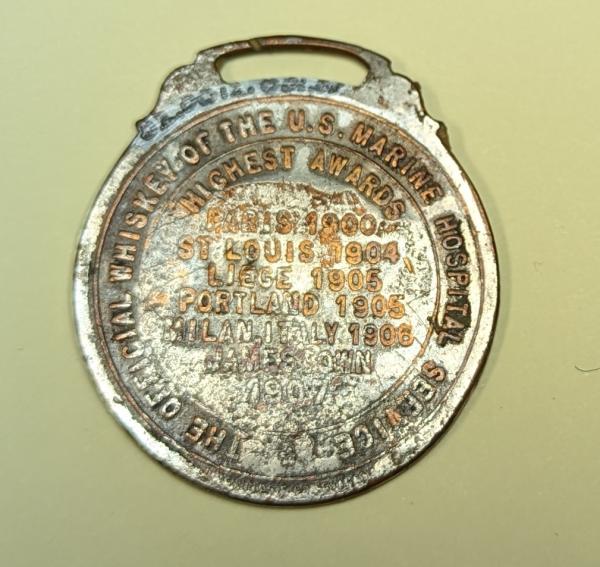
Watch fobs like this one, used as decorations for pocket watch chains in the days before wristwatches (and smartphones), were given away for free by the Kentucky-based Green River Whiskey Company in the early 1900s for advertising purposes. The company’s biggest endorsement at the time was its designation as the official whiskey of the U.S. Marine Hospital Service, established by President John Adams in 1798 to care for sick sailors. At the time, the health of sailors was “of paramount importance because they moved people, goods, and information across oceans, down rivers, and through canals,” Lyons said. “They were the highways, the airlines, the telephones, the mail service, and the internet of the time.” However, they also carried disease, and their ailments were often treated with whiskey, which worked about as well as you might expect.
This watch fob, dating back to approximately 1908, prompted Lyons to talk about Dr. Joseph Kinyoun, the founder of the Hygienic Laboratory, which was established in New York in 1887 by the Marine Hospital Service and would eventually become the National Institutes of Health. The Marine Hospital Service started the lab to address the health problems plaguing American sailors, and Dr. Kinyoun’s first big accomplishment was proving that cholera was causing an outbreak of illness on a ship docked in New York Harbor. Eventually, Dr. Kinyoun led the Hygienic Laboratory to so many successes that Congress moved the organization from New York to Washington, D.C., so it could conduct studies on the air quality inside Congress’ own chambers, which were constantly filled with cigar smoke, as well as investigate the safety of D.C.’s water supply.
A Diary of Early Public Health
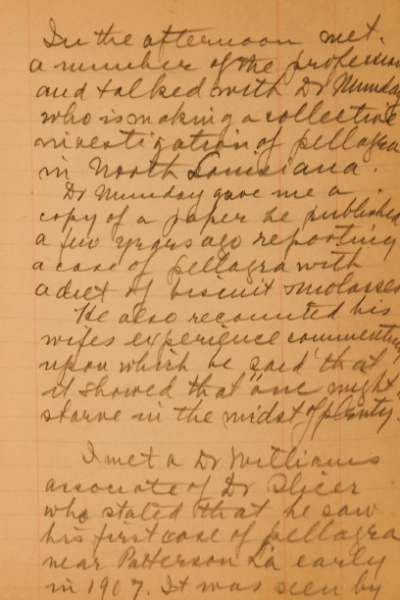
This page, from 1915, is part of the diary of Dr. Joseph Goldberger, a researcher at the Hygienic Lab who documented his travels across the American South in the early 20th century. Dr. Goldberger was visiting locations from orphanages and lumber camps to prisons and hospitals to investigate the cause of pellagra, a mysterious condition that killed about 100,000 Americans during that period, mostly in southern states. At the time, pellagra was thought to be an infectious disease, but Dr. Goldberger proved that it was actually caused by poor nutrition, one of the earliest examples of research into the health impacts of diet. Other scientists would later link pellagra specifically to a deficiency in the B vitamin called niacin.
Unfortunately, the pellagra research conducted by Hygienic Laboratory scientists like Dr. Goldberger was the subject of backlash from southern politicians because it highlighted the economic and racial health disparities in southern states. Nevertheless, shining a light on such disparities remains a key part of IRP research today.
NIH Makes a Big Move

These electrical wall panels were installed in 1937 in Building 2 on NIH’s current campus in Bethesda, Maryland. The Hygienic Laboratory had been re-named the National Institute of Health in 1930 and began moving to its new campus in Bethesda from Washington, D.C., in 1938. Building 2 was one of six buildings initially constructed on the new campus between 1937 and 1941.
The electrical panels gave scientists precise control of their electricity supply, just one of the many state-of-the-art (for the time) elements of the labs in Building 2. Other standout features included many elements that modern scientists take for granted: gas, electricity, and water lines; telephones; and large, clean rooms with sufficient space to keep research animals.
The Institute Gets Its ‘S’

These dental instruments belonged to Dr. H. Trendley Dean, the first dental scientist to work at NIH, starting in 1931. Today, he is best known for his studies of how fluoride affects dental health, which resulted in the first city-wide addition of fluoride to public drinking water in Grand Rapids, Michigan, in 1945.
Dr. Dean’s research reflected the growing attention being paid to dental health at the time. During World War II, the U.S. military discovered that nearly 9 percent of its recruits — all of whom were young men — didn’t qualify for military service because of the poor condition of their teeth. As a result, in 1948, the U.S. Congress passed legislation that created the National Institute of Dental and Craniofacial Research (NIDCR), and Dr. Dean was selected as its Director. Five other NIH Institutes were also created that year, and construction of the NIH Clinical Center began in November, thereby transforming the solitary National Institute of Health into the National Institutes of Health.
An Early NIH Invention Makes Waves
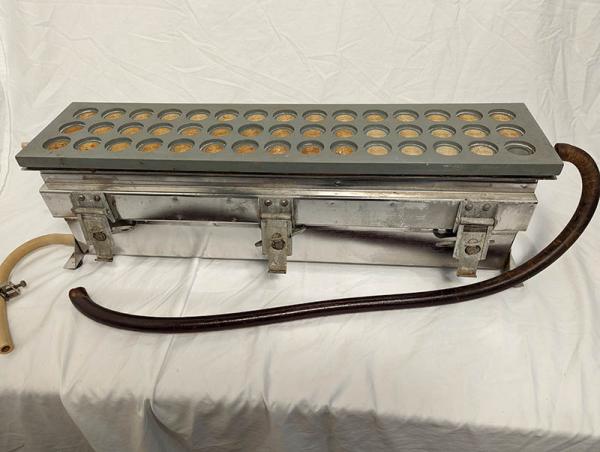
This laboratory tool, called a multiplater, traces back to 1963. The tool, invented by IRP researchers Dr. Phil Leder and Dr. Charles Burn, allowed scientists to separate the liquid and solid components from 45 samples at a time instead of conducting the process on samples individually in sequence. The multiplater represents just one of the many inventions created at NIH over the past century.
By dramatically hastening the pace of biomedical research, the multiplater contributed to a number of remarkable discoveries. IRP scientist Dr. Marshall Nirenberg used it to help him decipher the genetic code, while another IRP researcher, Dr. Martin Rodbell, used it in his studies of how cells communicate with one another. Both scientists won a Nobel Prize for their discoveries — Dr. Nirenberg in 1968 and Dr. Rodbell in 1994.
Taming the ‘Wild West’ of Heart Surgery
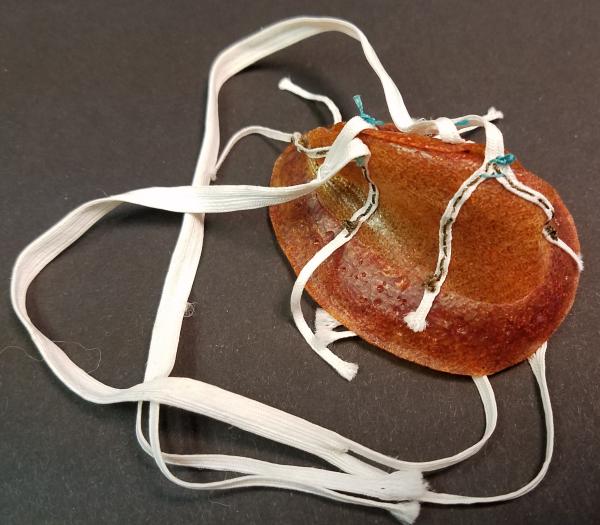
This artificial heart valve was invented by IRP researcher Dr. Nina Braunwald, who used it in a first-of-its-kind surgery to replace a woman’s mitral valve on March 11, 1960.
After the first open heart surgery was successfully performed in 1953 using a heart-lung machine, doctors began creating artificial heart valves from all sorts of materials and in a variety of shapes and sizes, leaving the field of cardiac surgery a ‘Wild West.’ Enter NIH, which actually tested the different artificial valves and developed national standards for the circumstances under which certain types of valves should be used. This is just one example of the many ways IRP research has changed how healthcare is done across the U.S.
NIH’s Early, Halting Steps Towards Diversity
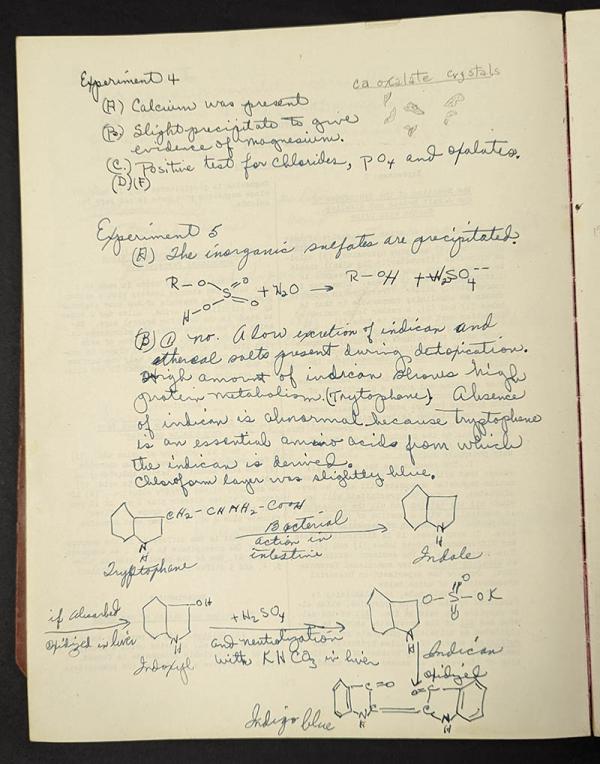
This page comes from a textbook called A Laboratory Manual of Biological Chemistry, which provided blank pages for scientists like Gwendolyn Young Cooper, the book’s owner, to write down their experimental results. After earning a master’s degree in biochemistry, Cooper joined the IRP as a laboratory technician, playing a key role in research on recombinant DNA, the use of laboratory techniques to manipulate and isolate specific pieces of DNA. Her importance to those efforts got her listed as the first author on several scientific papers her lab produced, which was unusual at the time for a laboratory technician, let alone a Black female one like Cooper.
At that point in time, NIH had a mixed record when it came to diversifying its workforce. To its credit, after the Chinese Exclusion Act was repealed in 1943, the IRP welcomed many Chinese scientists, and it was also much more open to immigrants in general than many universities at the time. NIH also had no Jewish quota limiting the number of Jews who could work there, as well as no nepotism rules, which many universities used to deny faculty positions to the female partners in married couples. However, NIH facilities were physically segregated until 1949, with separate bathrooms and eating areas for white and Black employees, and there was abundant racial discrimination in hiring and in promotion to leadership positions.
Today, NIH’s many diversity initiatives seek to right these historic wrongs and accelerate the careers of people whose predecessors were denied opportunities solely based on the color of their skin. In fact, Gwendolyn Young Cooper was involved in some of these programs herself, receiving the first-ever Special Equal Employment Opportunity Achievement Award from her home Institute, the National Institute of Allergy and Infectious Diseases (NIAID), in 1975.
NIH’s Pre-Computer Era
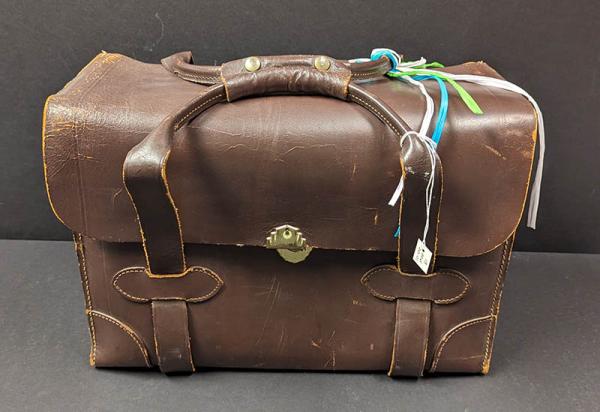
This briefcase from Rexbilt Leather Goods, dating back to roughly 1970, belonged to an executive secretary in NIH’s Center for Scientific Review, which reviews grant funding requests from scientists outside NIH. Briefcases like this were a common sight at NIH in those days, as everything had to be read and written on a hard copy before the advent of computer word processors. Similarly, scientists had to draw and label graphs and tables themselves rather than generating them with computers, and scientific correspondence was done via (gasp) handwritten letters.
IRP Researchers Go CRAY-zy
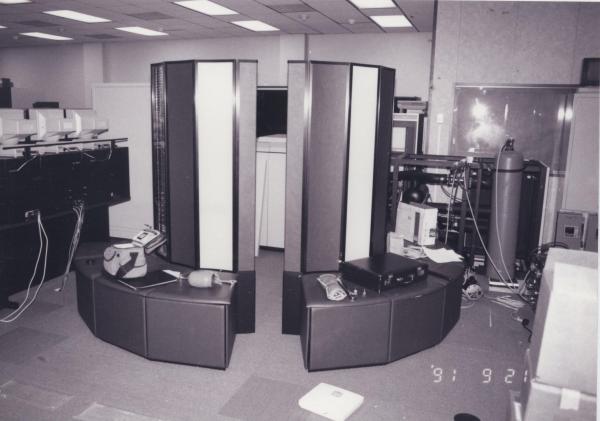
Of course, as soon as computers began proliferating, they found an important role in scientific inquiry. This picture shows the CRAY supercomputer, which arrived at NIH in 1986 and was used via network by scientists across the country to crunch their numbers. It was the first-ever supercomputer solely dedicated to biomedical research.
The CRAY had 120 megabytes of memory and 38 gigabytes of storage. Unsurprisingly, those numbers pale in comparison to the supercomputer IRP researchers have access to today, called Biowulf, which has over 930,000 gigabytes of memory and 50 petabytes of storage — more than a million times as much storage as the CRAY. Less powerful computers, of course, also play an essential role nowadays in patient care at hospitals like the NIH Clinical Center.
Despite its poor comparisons to modern-day computers, the CRAY was the world’s fastest supercomputer from 1983 to 1986 and played an important role in IRP research until its retirement in 1992.
NIH Opens Its Ears to New Groups

This sign was dropped by a protestor during a demonstration on NIH’s Bethesda campus on May 21, 1990, when more than a thousand people staged skits, sang songs, and participated in a ‘die-in’ on the lawn of NIH’s Building 1. The protest, held by AIDS activist group ACT UP, was scheduled to coincide with a meeting by the NIH advisory council and aimed to spur NIH to put more resources towards AIDS research. Of particular concern for the demonstrators were NIH’s narrow focus on the drug known as AZT to the exclusion of pursuing other potential treatments, as well as its lack of studies on the specific challenges faced by women, children, people of color, and intravenous drug users with AIDS.
Soon after the protest, AIDS activists, journalists, and patients were permitted to participate in NIH’s AIDS Clinical Trials Group, and tests of AIDS treatments began to include women, drug users, and children. This development foreshadowed the now-routine involvement of patient advocates in the development and management of clinical trials. Nowadays, such individuals are commonly involved in research on treatments for COVID-19 and myalgic encephalomyelitis, more commonly known as chronic fatigue syndrome.
DIY At NIH
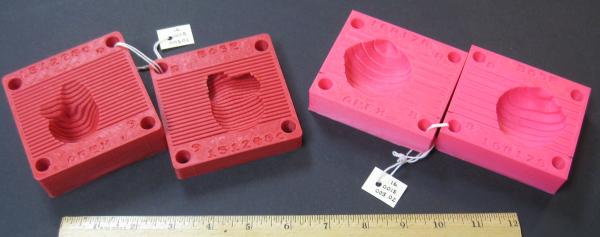
These 3D-printed prostate models were produced by the lab of former IRP senior investigator Dr. Marcelino Bernardo in 2008. Dr. Bernardo’s team 3D-printed the models, using his own custom-built 3D printer, with the goal of creating molds that accurately represented the particular locations and stages of individual patients’ cancers as seen on magnetic resonance imaging (MRI) scans.
The 3D-printed models don’t just represent how incredible new technologies have allowed scientists to do things they never could have done before. They also demonstrate the ways that new scientific techniques and technologies spread nowadays, as Dr. Bernardo initially got the idea to build his own 3D printer from a show on National Public Radio (NPR) that discussed how to do so using freely available ‘open-source’ information.
NIH Faces the COVID Crisis
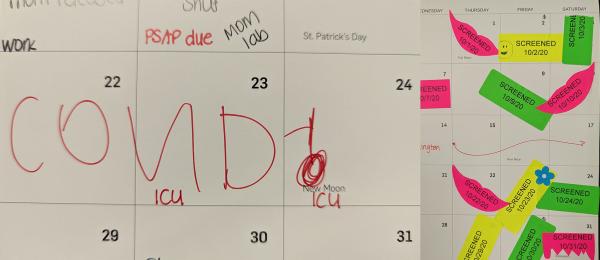
This calendar, which belonged to an NIH staff member, clearly shows how COVID-19 upended the regular pattern of life inside and outside the IRP. While its January and February pages are filled with birthdays, travel, doctor’s appointments, and even a 5K run, plans previously marked down for the rest of the year are crossed out due to the need for social distancing brought on by the COVID-19 pandemic. Despite the emotional challenges of dealing with the situation, the calendar also reflects the resilience of NIH staff during that difficult time. This particular staff member began decorating the calendar with the stickers given out when people were screened for COVID-19 upon entering the NIH Clinical Center. The dedication of IRP scientists and supporting staff to continue their work during that period was essential to answering important questions about the novel coronavirus and creating tests, treatments, and vaccines for it.
While it’s impossible to highlight every important moment in NIH’s history using just a dozen objects, Lyons’ presentation effectively and efficiently traced how NIH has become one of the most prestigious biomedical research organizations in the world. She ended her lecture by encouraging listeners to donate their own instruments, photos, or documents to the Stetten Museum. Who knows — maybe a seemingly ordinary object sitting on an IRP scientist’s desk today will be held up by historians years from now as an exemplar of the important scientific advances currently being made at NIH.
Subscribe to our weekly newsletter to stay up-to-date on the latest breakthroughs in the NIH Intramural Research Program.
Related Blog Posts
This page was last updated on Monday, January 8, 2024
